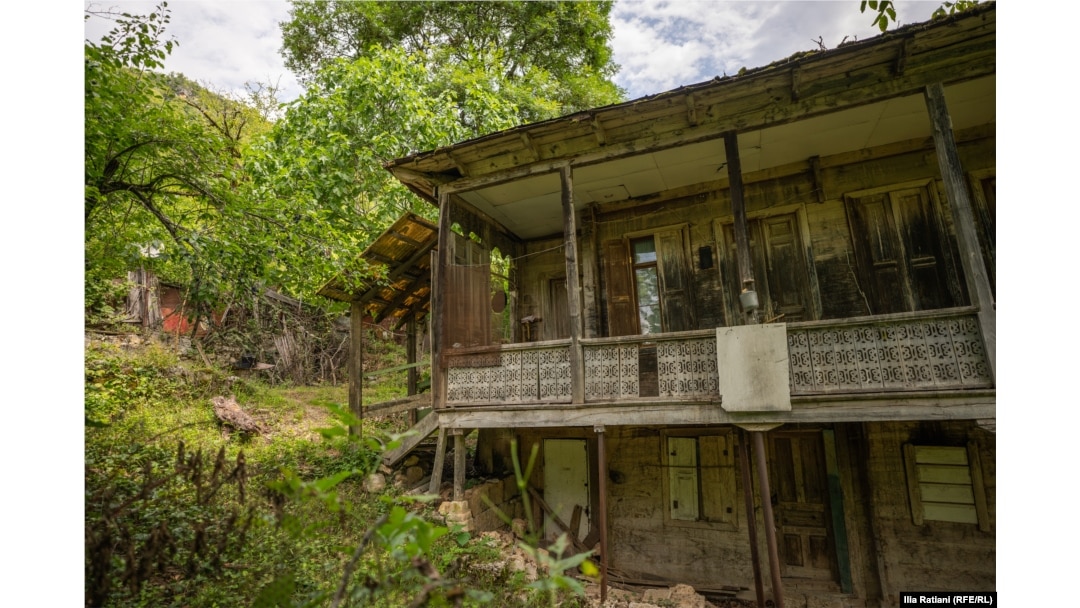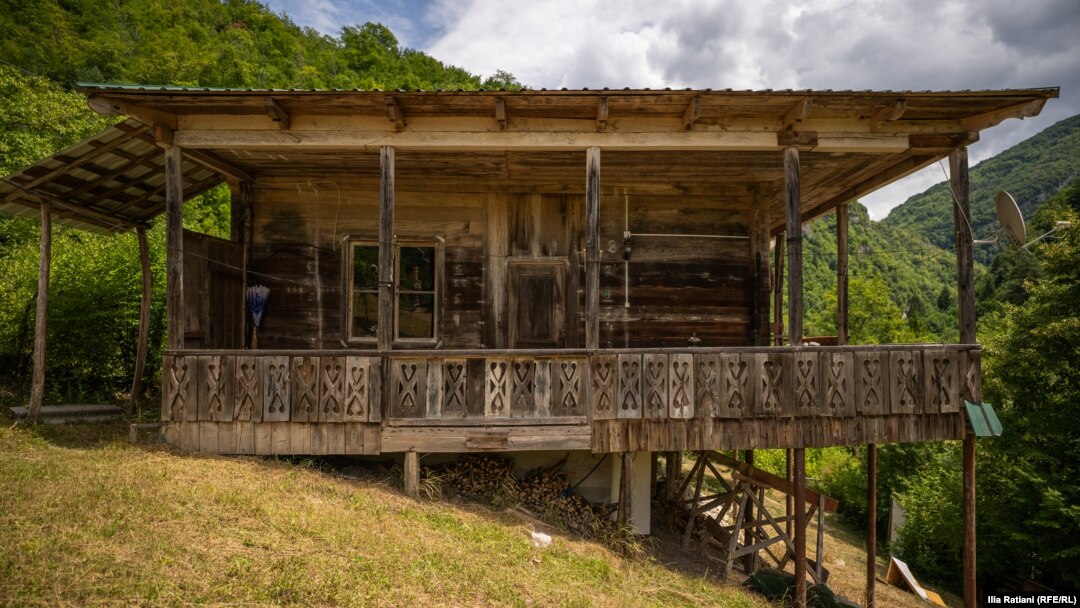GOGOLATI, Georgia -- Nestled south of the main Caucasian ridge and along the banks of the Shareula River stands the village of Gogolati, where centuries-old traditional wooden homes, known locally as "oda" houses, still stand.
The ornamental homes feature balconies carved with images of crosses, birds, and animals on the facades. Due to the moisture and heavy rainfall in the western part of Georgia, oda houses were elevated on wooden or stone "legs." However, if you look closely enough, one can see that these historical and culturally significant homes, without the proper care they require, are succumbing to the elements.

Huge rocks tower over the mountain road that leads to the settlement, whose roofs barely peak above the green canopy that conceals waterfalls, karst caves, and bountiful wildlife.

Nestled high in the Racha Mountains lies the settlement of Gogolati.
Located nearly 267 kilometers from the nation's bustling capital of Tbilisi, the village is home to 54 historically significant homes, some dating back nearly 250 years.
Yats and Bardri Sokhadze
Thanks to their unique character, these wooden houses were included in Georgia's National List of Cultural Heritage Monuments in 2019.
Meet The Residents
Like many of the other residents, Badri Sokhadze and his wife, Yats, live in the community only part time, from spring until autumn. They are happy to open the doors to their historic home for visitors to take a peek into Georgia's past.
A padlock hinders visitors from entering this intricately carved house that is slowly rotting away.
Only a few families reside in Gogolati and even fewer during the winter months, when heavy snowfall makes the mountain roads treacherous and at times impassable.
Another resident is Nunu Kakhidze, who is used to tourists wandering the grounds near her two-century-old home in order to take pictures -- some of which will end up on Instagram pages devoted to the settlement.
Nunu Kakhidze stands in front of her home.
Kakhidze, who arrives in Gogolati at the beginning of spring and stays until late autumn, said the government promised to help rehabilitate the houses, but no one has shown up to offer assistance.
As residents wait for the expensive repairs to begin, their homes continue to deteriorate further, allowing in water that permeates the wood's membranes, causing it to rot, soften, and fall apart.
Additionally, moisture compromises the structure of untreated wood, leading to mold growth and expensive restoration efforts that further complicate the process and increase the costs. The damage is apparent on the exterior as well as the interiors of the homes.
A Georgian Treasure
In 2020, then-Prime Minister Mamuka Bakhtadze promised that reconstruction aid would begin in hopes of making the village a tourist attraction.
"The village of Gogolati will become one of the most popular tourist attractions in Georgia," he said at the time.
The government had planned to invest nearly 6 million Georgian lari ($2 million) to be used for the reconstruction of the wooden houses in Gogolati.
The mayor of Ambrolauri, where the village is located, also claimed that work was to begin that spring. But the villagers say the rehabilitation of the houses never started.
In 2021, government officials visited Gogolati once again. This time, Culture Minister Tea Tsulukiani reiterated the promise to "preserve the unique wooden houses of the village of Gogolati."
When asked why the project hadn't started yet, Tsulukiani replied, "The pandemic prevented us from starting the conservation-restoration works, but we hope that today's visit will (begin the process to) revive this village."
Several years on, these historic houses continue to deteriorate further as the long-promised help has yet to materialize.


